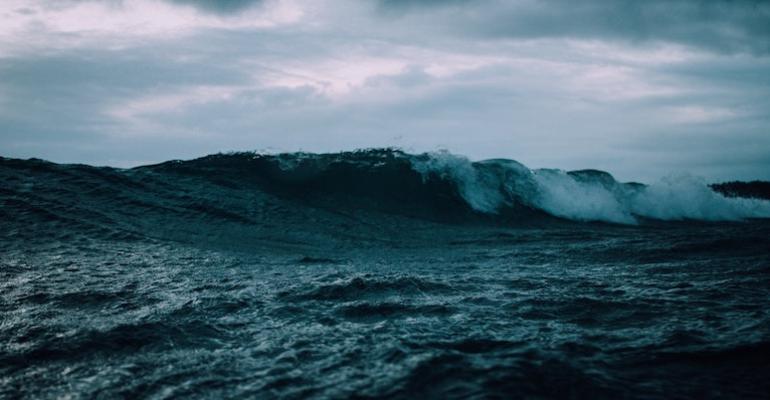The complete revision of the association’s Recommendation 34 after over 20 years updates the wave scatter diagram and wave spectra which define design environmental conditions and are the basis of wave load, fatigue, and seakeeping calculations.
The updated wave data is based on North Atlantic Sea state probabilities and is the result of a long-term review of wave data which began in 2016.
Satellite altimetry, wave buoys and analysis of past weather were used to update the dataset, which was previously gathered by visual observations on ships in the 20th century.
IACS said the updated data showed “both an increase in mean significant wave height for the North Atlantic and that more extreme weather is being experienced in recent years, including the existence of rogue waves and the possible effects of climate change.”
Revision 2 of IACS Recommendation No. 34 gives advice on sea states as well as wave spectrum, spreading, heading distribution and vessel speed. Wave data is significant for accurately representing ocean conditions and therefore structural requirements for vessels.
The new data will be used by classification societies when reviewing structural rules and will allow for more accurate estimation of design loads such as pressures, motions, accelerations, hull girder loads, all contributing to the improved standardisation of safety levels of the fleet, said IACS.
“The IACS Project team Global hindcast datasets are built on global coverage over an extended period of time and have been analysed and validated through the use of measurements from buoys and altimeters. By taking into consideration publicly available AIS ship position data, this allowed the wave data to be mapped to actual ship position & time when generating the corresponding statistics whose analysis showed that bad weather avoidance had a significant impact on the wave statistics of the sea states encountered,” said IACS.
IACS Secretary General, Robert Ashdown, said ‘This extensive, long-term project to update and improve one of the key data sources that go into modern ship design is indicative of IACS’ ongoing commitment to safer shipping and provides a valuable tool for all other stakeholders who rely on accurate wave data in their work’.
Copyright © 2024. All rights reserved. Seatrade, a trading name of Informa Markets (UK) Limited.
Add Seatrade Maritime News to your Google News feed.  |

